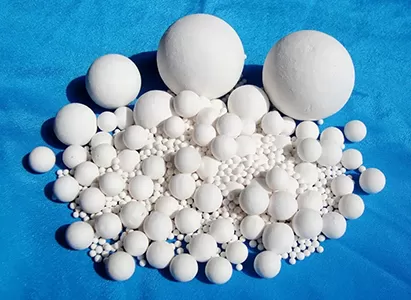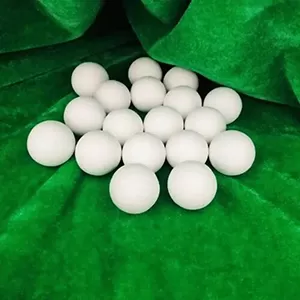Ceramic balls are manufactured through a series of precise preparation methods and production processes, which vary based on material type and application requirements. These processes typically include raw material selection, mixing, shaping, sintering, and finishing, ensuring the final product meets desired performance standards. Each step is critical to achieving the necessary hardness, density, and structural integrity of the ceramic balls.
Raw material selection is the first key step. Depending on the type of ceramic ball, materials such as alumina, zirconia, silicon carbide, or far - infrared minerals are chosen. The purity of these raw materials is strictly controlled, as impurities can affect the final product’s properties. For example, high - purity alumina powder (95% or higher) is used for alumina ceramic balls to ensure wear resistance.

Mixing follows, where raw materials are blended with binders, water, or other additives to form a homogeneous mixture. This mixture needs to have consistent viscosity to facilitate subsequent shaping. For instance, zirconia powder may be mixed with stabilizers like yttria to prevent phase transformations during sintering.
Shaping methods vary based on the desired size and quantity. Common techniques include isostatic pressing, which uses high pressure to form uniform green bodies (unfired ceramic balls), and injection molding, suitable for producing complex - shaped or small - sized balls. Extrusion and rolling are also used for larger batches, where the mixture is shaped into spherical forms through mechanical processes.
Sintering is a crucial process that transforms green bodies into dense ceramic balls. The balls are heated in kilns at high temperatures—typically between 1200°C and 1800°C, depending on the material. During sintering, particles bond together, reducing porosity and increasing hardness. For example, silicon carbide ceramic balls require sintering at around 2000°C to achieve their high strength.

Finishing processes are applied to meet precise dimensional and surface requirements. This may include grinding to achieve accurate sizes and polishing to create smooth surfaces, which is essential for applications like bearings or high - precision packing. Inspection is also part of finishing, where balls are checked for defects such as cracks or uneven density using methods like ultrasonic testing.
Quality control crossed the whole procedure of production.Raw materials are tested for purity, and samples from each batch are evaluated for hardness, density, and wear resistance. Adjustments to sintering temperatures or mixing ratios are made based on test results to ensure consistency.
In summary, the preparation and production of ceramic balls involve a sequence of carefully controlled steps, each contributing to the final product’s performance. By optimizing these processes, manufacturers can produce ceramic balls tailored to specific industrial, medical, or consumer applications.



